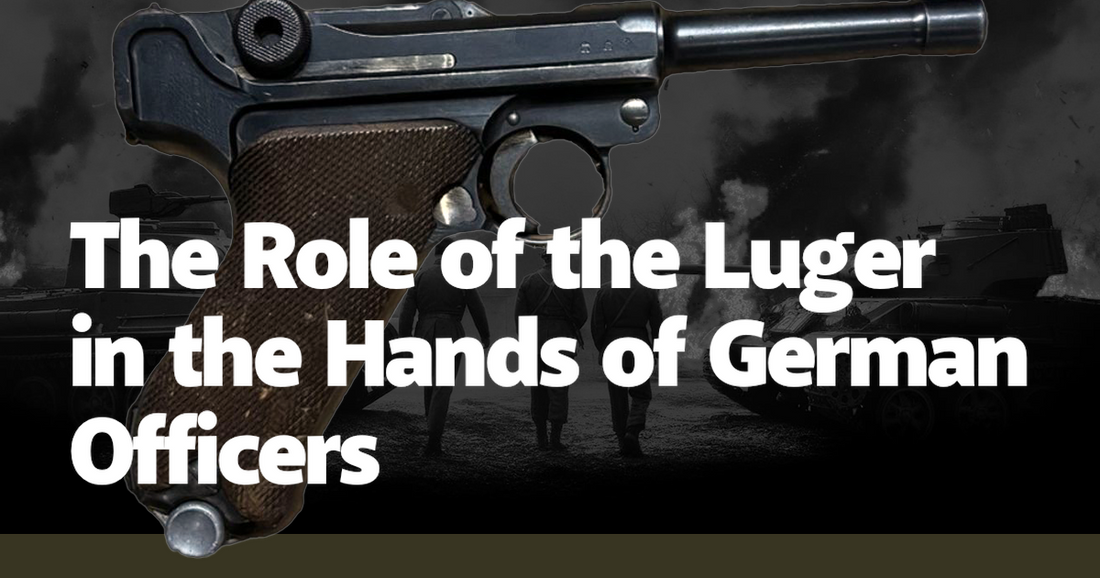In the annals of military history, few sidearms are as iconic as the Luger P08, a pistol that has become synonymous with German officers during both World Wars. Its distinctive silhouette, ergonomic grip, and mechanical precision made it a symbol of German engineering excellence. The Luger was not just a weapon; it was a statement of authority and prestige, often seen as an extension of the officer's hand, a tool that combined both functionality and a psychological edge.
The Luger P08 was designed by Georg Luger in the late 19th century and quickly became the standard issue for German military officers. Its adoption was a testament to Germany's commitment to precision and innovation. The pistol featured a toggle-lock mechanism that was both revolutionary and reliable, allowing for smoother operation and improved accuracy. This design was not just about function but also about instilling confidence in the officer who wielded it. The Luger was more than a firearm; it was a piece of art, a blend of aesthetics and engineering that set it apart from other sidearms of the time.
German officers were often seen with their Lugers holstered at their sides, a visual cue that reinforced their authority and command. The presence of the Luger was a psychological weapon as much as a physical one. It was a constant reminder of the officer's power and the military might they represented. In the trenches of World War I and the battlefields of World War II, the Luger became a symbol of fear and respect. Soldiers on both sides of the conflict recognized the Luger as a mark of an experienced and formidable adversary.
Anecdotes from the front lines further illustrate the Luger’s impact. One such story involves a German officer during the Battle of the Bulge, whose Luger was instrumental in a close-quarters skirmish. The officer's calm demeanor and precise shooting with the Luger turned the tide of the encounter, showcasing the weapon's reliability and the officer's training. Such stories became part of the lore surrounding the Luger, enhancing its reputation as a tool for decisive action in critical moments.
The Luger also played a significant role in the psychological warfare of the time. Its distinctive sound when fired was instantly recognizable, often causing enemy soldiers to hesitate or retreat. The mere sight of a Luger could demoralize opponents, knowing that they were facing well-trained and well-armed officers. This psychological edge was a crucial element in the chaotic and brutal environments of the World Wars, where morale could be as decisive as firepower.
Collectors and historians today continue to be fascinated by the Luger, not just for its engineering but for its storied past. Each Luger carries with it the history of the officers who wielded it and the battles it witnessed. The markings and wear on each pistol tell a story of survival, conflict, and the human experience of war. For many, owning a Luger is like holding a piece of history, a tangible connection to the past and the soldiers who shaped it.
The legacy of the Luger extends beyond its role in the hands of German officers. It influenced the design of future firearms and set a standard for military sidearms. The Luger’s toggle-lock mechanism and ergonomic design were ahead of their time, inspiring future innovations in firearm technology. Even today, modern pistols owe a debt to the pioneering design principles established by the Luger.
In conclusion, the Luger P08 was more than just a sidearm for German officers; it was a symbol of authority, a tool of psychological warfare, and a piece of engineering marvel. Its impact on military history and firearm design is undeniable, and its legacy continues to be felt today. The stories and legends surrounding the Luger only add to its mystique, making it a fascinating subject for historians, collectors, and military enthusiasts alike.

